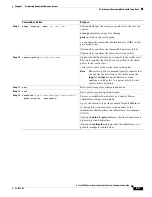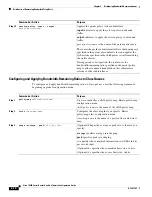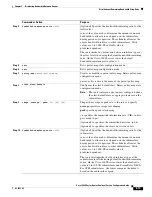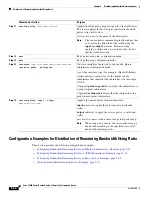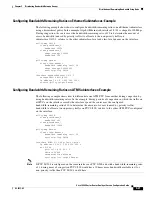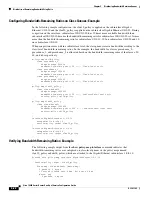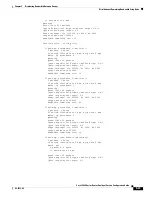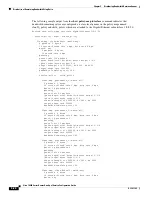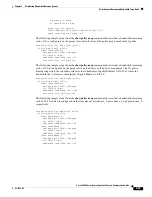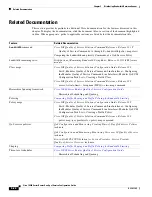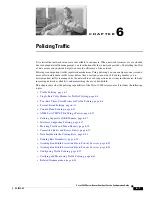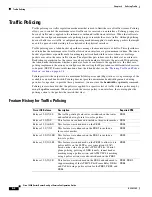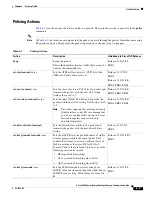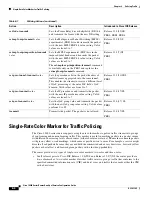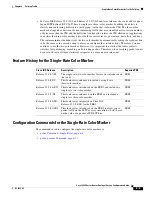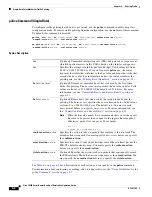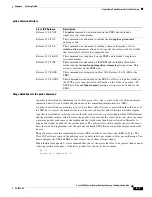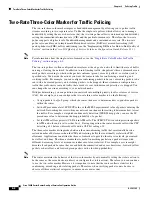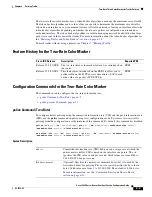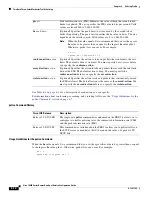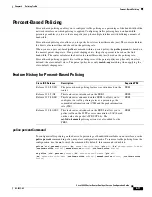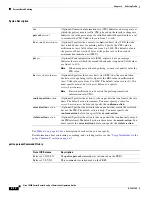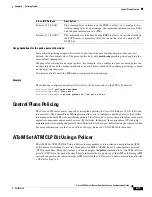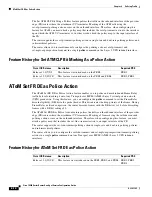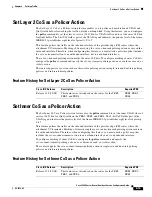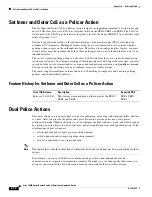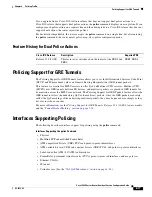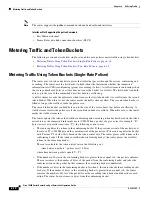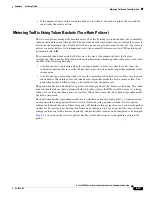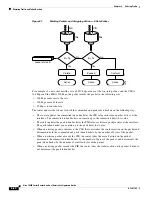
6-5
Cisco 10000 Series Router Quality of Service Configuration Guide
OL-7433-09
Chapter 6 Policing Traffic
Single-Rate Color Marker for Traffic Policing
•
In Cisco IOS Release 12.0(25)S and Release 12.3(7)XI, and later releases, the router adds support
for an IETF-defined, RFC 2697-based, single rate, three-color marker by adding the ability to
classify nonconforming traffic into a third group: traffic that violates the CIR. The three-color
marker distinguishes between the nonconforming traffic that occasionally bursts a certain number
of bytes more than the CIR and the traffic that continually violates the CIR allowance. Applications
can utilize the three-color marker to provide three service levels: guaranteed, best effort, and deny.
The router maintains the behavior of the two-color marker by automatically setting the violate action
to be the same as the exceed action (unless you configure the violate action). Therefore, you can
continue to use the two-color marker. However, it is important to note that the router collects
statistics for conforming, exceeding, and violating packets. Therefore, when verifying packet counts
be sure to observe all three statistical categories to ensure an accurate count.
Feature History for the Single-Rate Color Marker
Configuration Commands for the Single-Rate Color Marker
The commands used to configure the single-rate color marker are:
•
police Command (Single-Rate), page 6-6
•
police percent Command, page 6-11
Cisco IOS Release
Description
Required PRE
Release 12.0(17)SL
The single-rate two-color marker feature was introduced on
the router.
PRE1
Release 12.0(25)S
This feature was enhanced to include a single-rate
three-color marker.
PRE1
Release 12.2(16)BX
This feature was introduced on the PRE2 and included a
single-rate two-color marker.
PRE2
Release 12.3(7)XI
This feature was enhanced on the PRE2 and included a
single-rate three-color marker.
PRE2
Release 12.2(28)SB
This feature was integrated in Cisco IOS
Release 12.2(28)SB for the PRE2.
PRE2
Release 12.2(31)SB2
This feature was introduced on the PRE3 to allow you to
police traffic on the L2TP access concentrator (LAC) based
on the value of a packet’s IP DSCP bits.
PRE3

